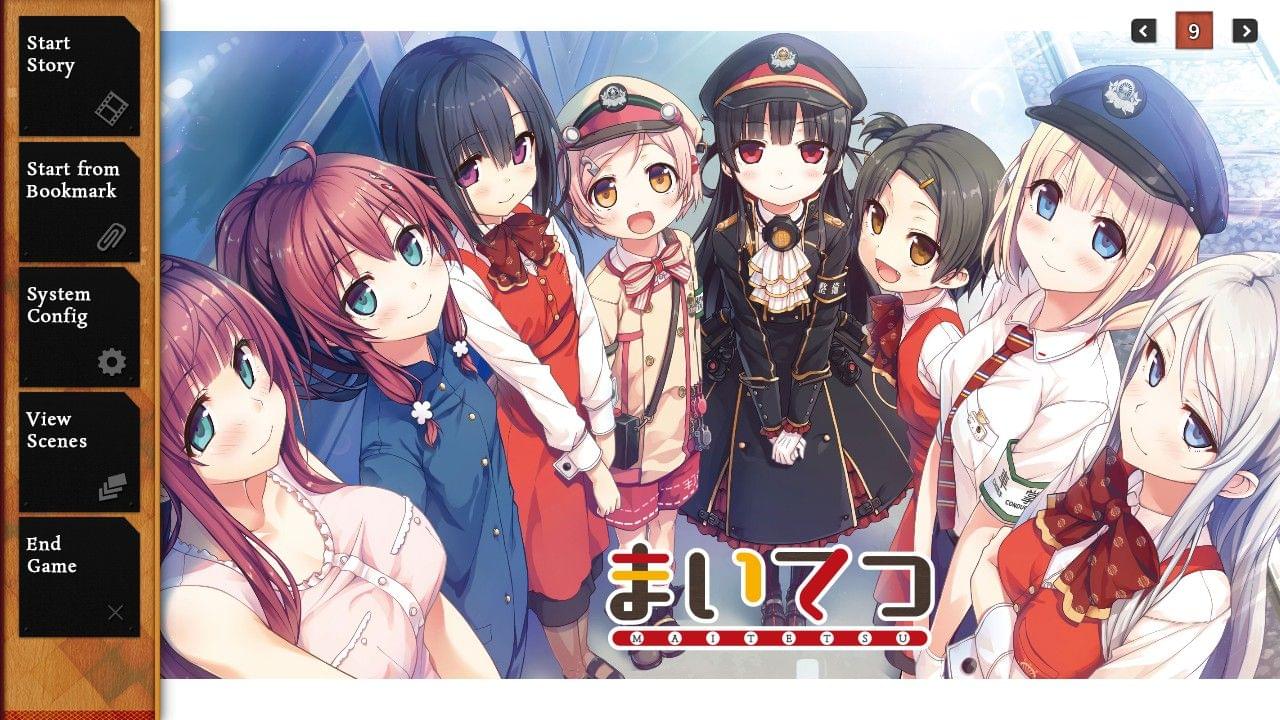
A review in Chinese is now up, as per requested. It is mainly based on the Chinese version of the game, but does not contain comments to any specific efforts of translation.
This is a review and a quasi-formal analysis of the game Maitetsu, a visual novel. Because it has a Japanese background, and involves certain knowledge specific to the railroad industry, this review will be broken into multiple sections, including various background information required to enjoy the game, basic world-building and plot, certain specific topics of railroading involved, and comments specific to the English version.
However, before we dive into the details, I feel that it is important for me to state some of my background, since I might approach this game very differently than some of the fellow players. I study computer science and media and film studies in the United States, and practices photography (often on railroads and trains) during my free time. My native language is Chinese Mandarin, but I also speak English as a second language and use it in academic settings mostly. English was also the language that I used when starting the hobby of railfanning, but I had more interest in Chinese railway systems, therefore I have developed a fair amount of knowledge in railroading, and a corresponding library of railroad terminologies, both in English and Chinese.
As for the game, I happen to have purchased and went through the Chinese version (sold separately), which happens to be of high quality, especially in rail terminologies (more on that later), before my purchase of the English version and had a second pass of the plot. Therefore, when I comment on aspects specific to the English version, such as text translations, I will be using the Chinese version as a reference, and also cross-compare with the Han characters (Kanji, which is partially mutually understandable with Chinese text) in the Japanese text supplied in both versions when necessary.
Overview, World-Building, Background, and Analysis
Maitetsu is set in an alternate world that is mostly based on the world that we live in, but modified, or defined by media scholar Marie-Laure Ryan as a “recentered universe” in the book Narrative as Virtual Reality, which is a mirror of our primary world with fictional truths (73–75). It should be noted that Maitetsu‘s universe mostly follows the laws of our universe, only with slight modifications, so that the railroading knowledge in the alternate world would also be applicable to our world. First of all, in Maitetsu‘s universe, World Wars did happen, but much earlier than that in our world, and Japan was ultimately defeated, but not by means of nuclear weapons. In the postwar periods, a fictional machinery called “Arica” was invented, which is very similar to what would be considered as a perpetual motion, and as a result, railroads and other means of transportation that relied on fossil fuel were decimated. Secondly, while Arica decimated railroads, it did inherit one of the latter’s legacy, in the form of fully autonomous navigation units that can communicate with each other out-of-band using a mechanism known as “sympathetic connection” and possess a high level of intelligence, enough to pass what we know in our world as a Turing test. These autonomous navigation units are presumably developed from “Raillords,” or humanoids that are designed to assist human engineers in operating and maintaining railroad rolling stock, especially motive power, from the era of railroads, and Raillords interoperate with the Arica navigation units via sympathetic connections.
Besides these obvious facts that distinguishes the world of Maitetsu and that of ours, there are also certain less obvious ones, and most of them are clearly inherited from our world. For example, most of the rail infrastructure that were left behind after the dissolution of the Imperial Railways (known in our world as the Japanese Government Railways and later Japanese National Railways, which eventually become what is known as the JR Group today after being privatized) national network (termed the Track Closure Era in the game) are of 3 ft 6 in (1067mm) gauge, or Cape gauge, instead of the 1435mm or 4 ft 8 1⁄2 in Standard gauge used in China and the United States. This is inherited from the fact that Japan’s pre-Shinkansen national rail network (or lignes classique in French) is of Cape gauge. The rolling stock involved in the story, and the railroad operating rules, are also directly borrowed from our world, in order to achieve the effect of introducing knowledge of railroading that are applicable in the real world. For example, the Imperial Railways Class 8620 is the same as the JGR Class 8620 in our world. Names of places in Maitetsu‘s world have also most being kept synchronized with the real world, with the notable exception of the town of Ohitoyo, which is the town of Hitoyoshi in our world; names of various railway companies have also been changed. For example, the Ohitoyo Railway in the alternate world is Kumagawa Railway in our world, and the latter is a public-private partnership while the former is technically privately owned.
Typical with Japanese visual novels, Maitetsu features what Ryan would define as a vector structure, where each primary route, such as the ones for Hachiroku and Hibiki, are branches that originated from the common route, and secondary routes are either branched off a primary route, as in the case of Reina and Kisaki, or branched directly off the common route, as in the case of Makura and the final “Grand Route” (165–66). The interactivity of Maitetsu, just like many other Japanese visual novels, are of the internal-ontological type (163), with the player mostly are in the perspective Migita Sotetsu (last name then first name, as in Japanese and Chinese order), the male protagonist, and implicitly switches to other characters from time to time. The interactivity level is of peripheral only (Ryan 176), as the story is fully determined, and the presentation itself within each route (which should be considered as an independent and self-contained story) is also fully determined. Combined with the previously-stated world-building techniques, Maitetsu does give me the feeling of being immersed, and made me believe that the events happened in that world are plausible, despite the fact that by laws of physics, it is very unlikely that a perpetual motion can be built, similar to what Ryan terms as a process of “make-believe” (75–78). However, it should also be noted that the nature of visual novel and the relatively low level of interactivity also made the immersion to be relatively easily disengaged, especially during the second pass, when I was working with English text, which is not my native language.

Without spoiling too much the fun of reading, here are some key points of each route. The overarching theme is Sotetsu, the adopted son of the Migita family, a traditional liquor brewer and wholesaler, attempting to stop the establishment of an Arica factory at Ohitoyo, his second hometown, for fears of environmental impacts. In the common route, Sotetsu accidentally awakened Hachiroku, the Raillord for the formal Imperial Railways engine 8620, the first unit in her class, and worked with the artisans in the town of Ohitoyo to bring engine 8620 into working order, and overcoming many of the same challenges that steam locomotive rebuilding projects, like NRM’s project to restore the LNER Class A3 4472 Flying Scotsman and A1 Steam Locomotive Trust’s project to build the LNER Peppercorn Class A1 60163 Tornado from scratch, that actually happened in our world, faced. From that point, various routes begin to branch, and topics related to the revival of railroading and economy in general were explored, including operating special tourist trains, turning deserted coal mines into a theme park, and establishing a rail infrastructure management company (one similar to Network Rail in the UK) and issuing rail construction venture funds. Finally, the Grand Route is a montage of all the different ideas explored in the independent routes.
Ideas that Stood Out to Me
Warning: Spoilers in this section.
As a student in the field of media and film studies and a veteran railfan, there are certain ideas in the game that stood out to me. These ideas include the vague Do Androids Dream of Electric Sheep? (Dick) reference and Philip K. Dick overtone exhibited in Hachiroku’s route, the establishment of a rail infrastructure operator in Kisaki’s route, and the connection between the story and the demise of the Saratoga and North Creek Railway and the Canadian Main Line in the upper part of New York State.
In Hachiroku’s route, Sotetsu gradually fell in love with her, and decides to marry her. However, while Hachiroku also fell in love with Sotetsu, she resisted the idea of marrying him. That was because while Hachiroku has emotions and free will, she always considered herself as a “thing,” rather than a human being, and she knew very well that she is incapable of giving birth of a child, by nature. However, Sotetsu insisted that Hachiroku should be treated as a full human being with intelligence and free will, and he would marry nobody but her. Towards the end of this route, there had been several conversations between Sotetsu and Hachiroku addressing these issues. The conflict between Hachiroku’s free will and her social status as a “thing” draws parallel with the issues with Replicants in the book Do Androids Dream of Electric Sheep? (Dick) in my perspective. However, while Sotetsu successfully persuaded Hachiroku to accept her position as a human with free will and to marry him, the resolution was somewhat abrupt and fast-paced, and lacks some of the depth regarding inner conflicts of both Sotetsu and Hachiroku. Do Androids Dream of Electric Sheep? (Dick), on the contrary, used more plot to describe the relationship between Rick Deckard and the Replicant Rachael, and some of their inner struggles, but ultimately left the problem of whether a Replicant (which draws parallel with Raillords) should be treated as a human being or not unanswered. It should also be noted that there is one scene in Hibiki’s route when Hachiroku vaguely referenced the same problem, but that rounte did not dive into this issue at all.
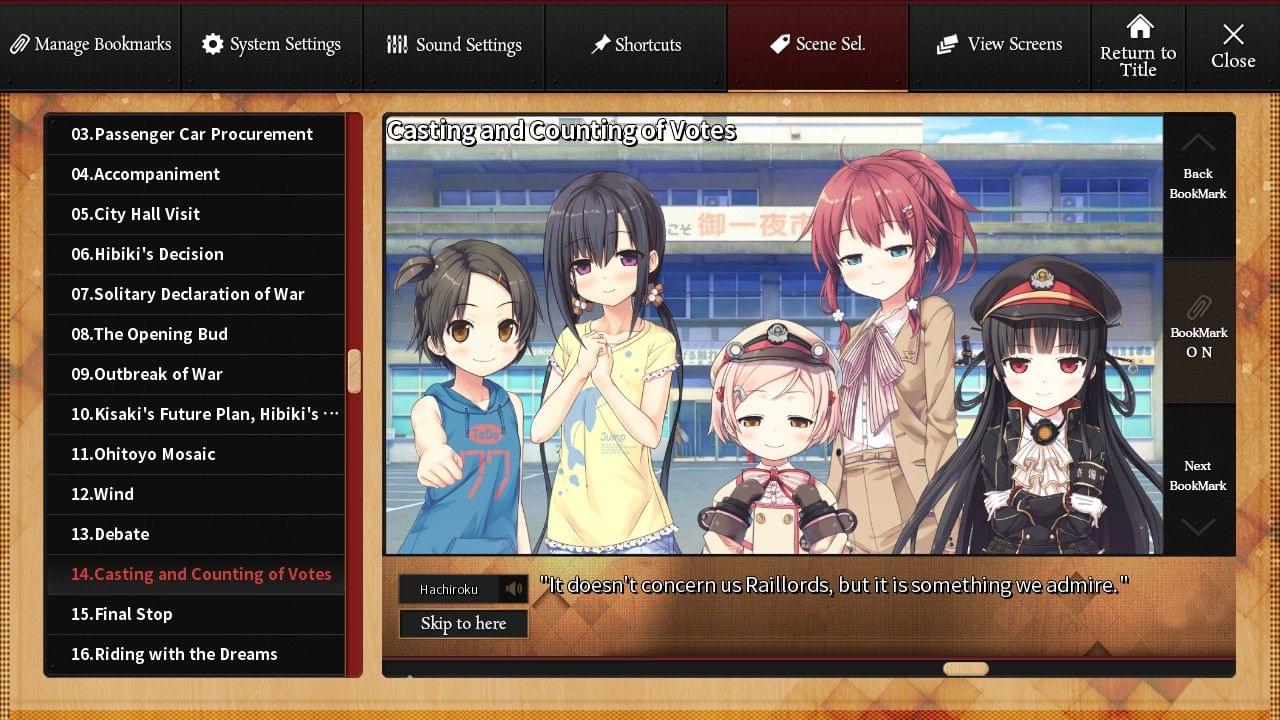
In Kisaki’s route, Kisaki, as a banker, with the help of Sotetsu and Hachiroku, came up with the idea of relocating the Arica factory, and collaborate with the Arica company and rail companies to establish a dedicated rail construction and infrastructure operating company and construction venture funds. The infrastructure operator would then lease access rights to rail operators and allow newly built Arica vehicles to be transported and via the rehabilitated rail network. Under this business model, the transportation cost of new Arica vehicles can be greatly reduced, and the railroads and their investors can maintain a steady profit. This drew my attention because it was too easy to connect this with the attempt to partially privatize the rail system in China, as one of the mostly discussed plans is to separate the infrastructure operators and the train operators. While these two models are very different in terms of context and method, Kisaki’s story does prompt me to start thinking about the pros and cons of the separation, and research into the track record of infrastructure operators like UK’s Network Rail.
Finally, the story of Maitetsu started because of the demise of railroads, which led to the economy downfall of Ohitoyo. Similar events happened in the Saratoga Springs region too. The demise of railroads led to the abandonment of various branches, impacting local industries and drove them away. This not only caused unemployment in the region, but also further impacted the railroads. In the meantime, some short-sighted decision makers were advocating tearing railroads up, eliminating the possibility of future rehabilitation. Maitetsu is useful in this aspect, since it prompts me to think about the decision made by the decision makers – intuitively we all know these decisions do not make sense, but the important part is why they do not make sense, and what is needed to rehabilitate the railroads, and the local economy.
Other Details Worth Mentioning (Mostly Railroading-related)
Note: many of these details also exist in the TIPS system, which is like a built-in dictionary and encyclopedia. This section assumes basic understanding on railroading and railroad technologies.
The story of Maitetsu is very likely to be partially based on JR Kyushu’s effort to restore engine 58654 which was statically preserved in the city of Hitoyoshi after being decommissioned by the Japanese National Railways. Currently engine 58654 is the only Class 8620 engine to be certified for mainline operations, and one of the only two Class 8620 engines in working order (the other being 8630, but she is not mainline certified and is restricted to operating within the Kyoto Railway Museum). 58654 is currently being used by JR Kyushu to haul a special tourist train named SL Hitoyoshi, which runs between Hitoyoshi and Kumamoto, and serves featured local food onboard. However, 8620 was the original unit produced by Kisha Seizo, her original designer, while 58564 was a license-built copy manufactured by Hitachi, Ltd., which is more famous for their home appliances and certain electronics like optical disc drives. In Maitetsu, 8620 cannibalized the chassis of a statically preserved sister unit, but in the real world, JR Kyushu managed to manufacture a new chassis for engine 58654. The actual engine 8620 in our world is currently being statically preserved in Tokyo.
Class 8620 was the first steam locomotive to be domestically designed and produced in Japan. Therefore, choosing the first production unit of that specific type for the story probably has some element of national pride in it. She was originally designed and produced by Kisha Seizo (later absorbed by Kawasaki Heavy Industries and was eventually disbanded in our world), but since her popularity maxed out Kisha Seizo’s production capabilities, her design was licensed to various other manufacturers including Hitachi, Ltd., Mitsubishi Heavy Industries, Nippon Sharyo (appeared in the alternate world as Hinomoto Passenger Car Works), and Kawasaki Heavy Industries. She is a 2-6-0 Mogul type, superheated, steam locomotive rated at 759hp and designed for short express passenger trains, similar to the modern China Railways SS8 electric locomotives and the American EMD F40PH diesel locomotives. Her design was clearly influenced by certain British practices, including the use of plate frames instead of bar frames, the use of vacuum brakes as built (converted to air in game), and the use of an optional cowcatcher, but she was built with American-style Janney/AAR couplers with friction draft gear. Although built with a very specific purpose in mind, she eventually became a very popular general-purpose locomotive, and an icon of Japanese railroading of her era, much like the DF4B diesel locomotives on China Railways and the EMD SD40-2 diesel locomotives on various American railroads.
KiHa 07, originally classified as KiHa 42500, is an internal-combustion-engine-powered multiple unit designed for suburban service, similar to the British Rail Derby Lightweight, and to an lesser extent, the American Budd Rail Diesel Car. She was built before World War II, and was originally equipped with a gasoline engine and a stick shift, similar to the ones used on automobiles. Originally designed and manufactured by Kawasaki Heavy Industries, she had also been license-produced by Nippon Sharyo, Niigata Engineering (defunct in 2007), and JNR Omiya Works. During the war, because of oil shortages, there were experiments to convert her to burn natural gas, but with only limited success. In the postwar period, due to fire concerns, all KiHa 42500’s that were still in service were gradually converted to diesel power, since diesel fuel is less flammable than gasoline. Eventually, they were rebuilt with automatic (hydraulic) transmissions, and were re-classified as KiHa 07. Some lesser-known derivatives also exist. For example, JNR Shikoku Sub rebuilt 4 KiHa 07 units into KiYuNi 07, a combined passenger and railway post office (RPO) multiple unit, to transport mail to remote towns served by their branches. Another novel prototype, the KiHa 07 901, featured high-speed trucks, a revised and streamlined body design, and a General Electric T58 turboshaft engine (produced under license by IHI Corporation). She was built to explore the possibility of using gas turbine engines to achieve high speeds.
20 series EMU (appeared in game as KuHa 26) was designed for limited express service on lines with DC catenary electrification. Built by Kawasaki Heavy Industries, Kinki Sharyo, and Kisha Seizo, she was designed with a maximum speed of 160km/h or 100mph, and was certified for 110km/h or 70mph in service. As one of the most advanced EMUs operated by JNR at her time, she had features including dynamic braking, electro-pneumatic brakes, and electric train heating. The same design later received minor improvements and became the 151 series and the 161 series EMUs, and received further improvements including uprated traction motors, improved air conditioning, regenerative braking, and hardening for extreme cold weather and became the 181 Series EMU. Unlike in the alternate world, where she first operated on the Kagoshima Main Line, she was originally built for service on the Tokaido Main Line, and later her derivatives were used on Sanyo Main Line (with through service to select destinations on the Kagoshima Main Line, including Hakata), Shinetsu Main Line, and Joetsu Line. Currently, KuHa 181 1 (formally KuHa 26001) is being preserved at Kawasaki Heavy Industries’ Kobe Works, carrying an original JNR head plate for the named train Kodama, which was the fastest limited express service on the Tokaido Main Line in her days (today Kodama is used for all-stop local service on the Tokaido Shinkansen, while Hikari and Nozomi, both originated from the South Manchuria Railway, are used for express and limited express services, respectively) and the first regular train service in Japan utilizing EMUs, and the original road number KuHa 26001.
In the game, Hachiroku directed all trainees to fully release the brakes before re-applying them with a different strength when pulling into the station. This suggested that both the engine and the passenger stock are installed with direct-release-only Westinghouse-type automatic air brakes. More advanced air brakes in our world, such as the Kunze-Knorr brakes used in Germany (by the pre-war Deutsche Reichsbahn or German Reich Railway), and also vacuum brakes, featured gradual release and allowed the strength of brakes to be adjusted without having to release it completely.
The name “Hachiroku” literally translates to the number eighty-six. This is referring to her class number 8620, and “Hachiroku” happens to be the nickname given to this class by Japanese railfans. Similarly, “Niiroku” literally translates to twenty-six, and refers to KuHa 26, the un-powered coach class cab car in a 20 Series EMU.
The British Raillord that was mentioned at the end of Makura route, F. Scottie, seems to be a reference to the famous LNER Class A3 4472 Flying Scotsman. Considering her fame and her high specifications as a steam engine, it was not surprising that all the rail experts wanted her to serve at Migita’s brewery. Besides, LNER Class A3 was also far more advanced than JGR Class 8620, so her expertise can also potentially help with the improvements of Hachiroku and her engine.

At the very beginning of the game, Hachiroku tried to stop the runaway train by putting the reverser to “reverse” position. While it may sound wild, it is completely plausible, and had happened at least once in our world. During the 1953 Pennsylvania Railroad train wreck, when a Federal Express became a runaway due to break failures, the engineer decided to put the engine’s reverser to “reverse” when it became evident that she would run into the Washington Union Station. That train wreck caused no deaths, and only 43 people were injured.
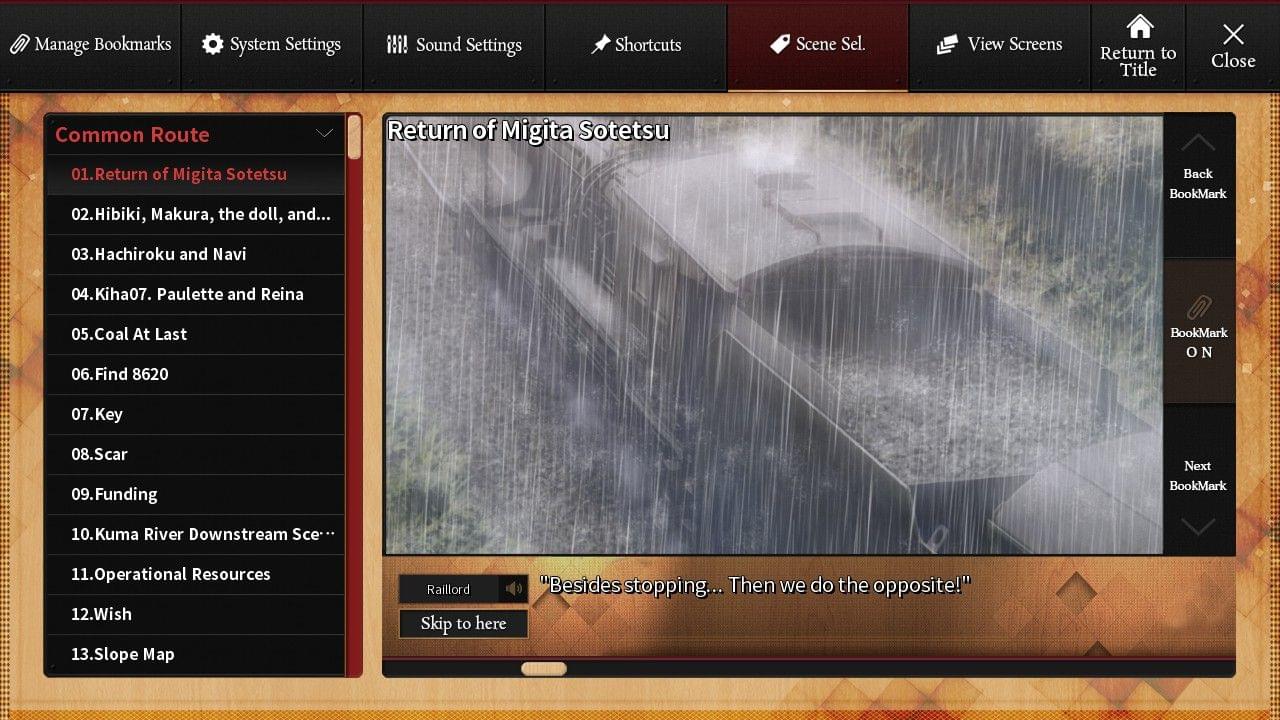
Comments Specific to the English Translation
The English translation is generally of good literary quality, and mostly fluent in terms of language. However, it seems that the English localization team is not familiar with English rail terminologies, and many of the translations of such terminologies are questionable. Some of the minor issues included mixing the use of American and British terminologies, which are substantially different, and this may cause confusion for newcomers. Other issues included providing completely literal translations which strictly corresponds to the original text, instead of replacing them with corresponding English expression that are used in the railroad industry, and few completely incorrect and confusing translations.
An example of mixing American and British terminologies is that the translation uses both “engineer” and “driver” at the same time. In North America, the term “engineer” is preferred when referring to the human operator that operates a piece of railroad motive power, while in the United Kingdom, the term “driver” is preferred. In the game, Sotetsu himself had been referred to as an “engineer,” while the driving stand is termed as “driver’s stand” instead of “engineer’s stand.”
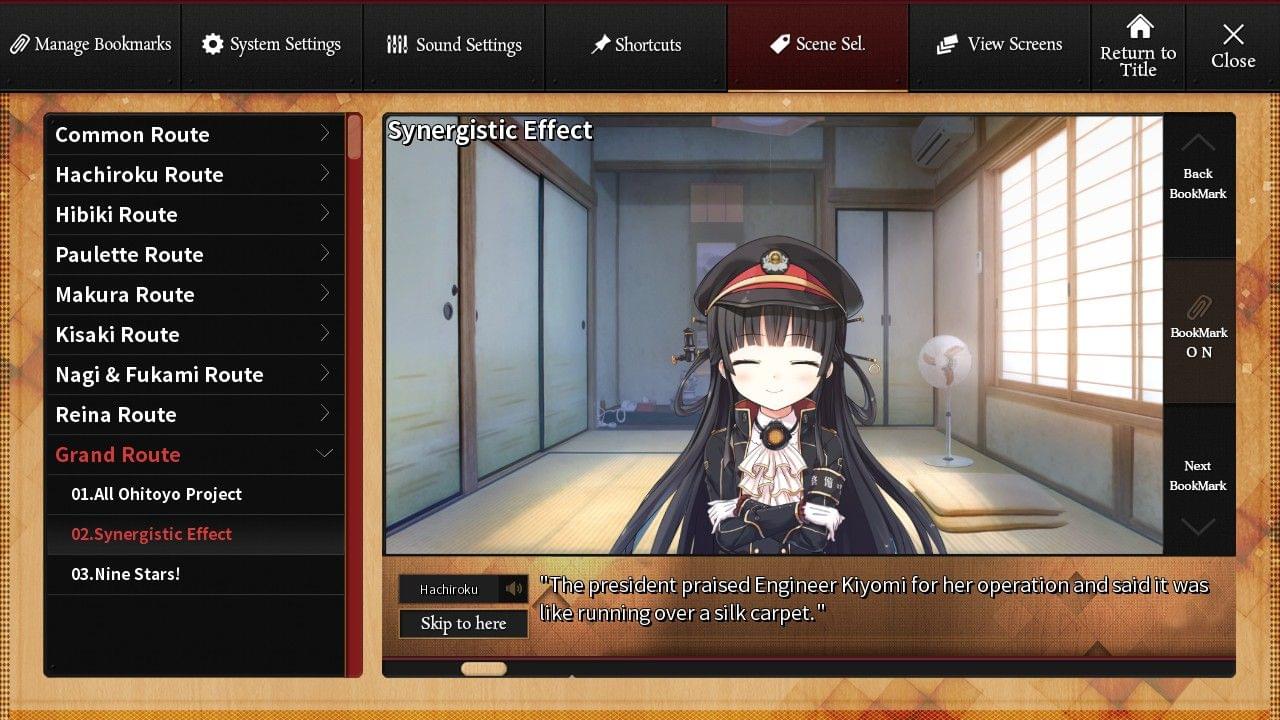
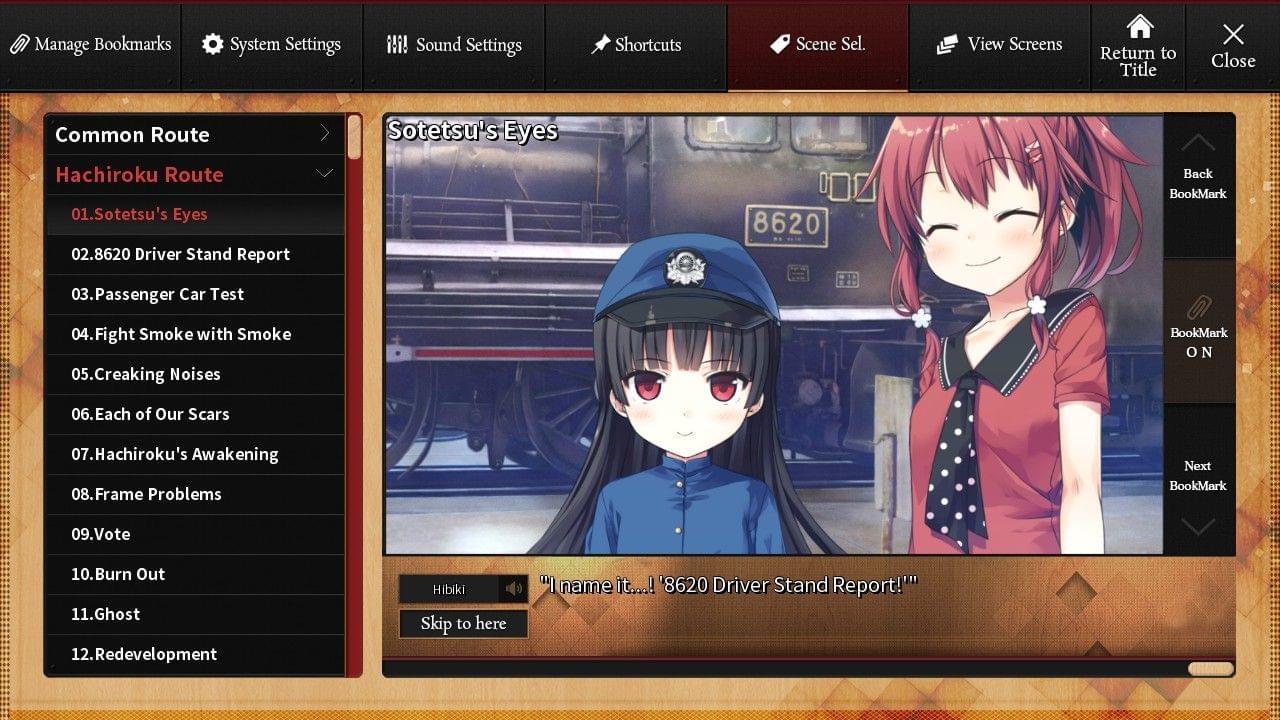
There are several examples of providing completely literal translations, instead of using the corresponding rail terminologies in English. For example, at the very beginning, before the train became a runaway, the English text used the expression “spreading of sand,” which is an text-for-text translation of either the Japanese or Chinese expression, to describe “sanding,” the terminology used in English. Another example is when describing the break handle positions, the English text used “drive,” which is a direct translation of the original Kanji text, instead of “release,” which is the preferred expression in both North America and the United Kingdom.
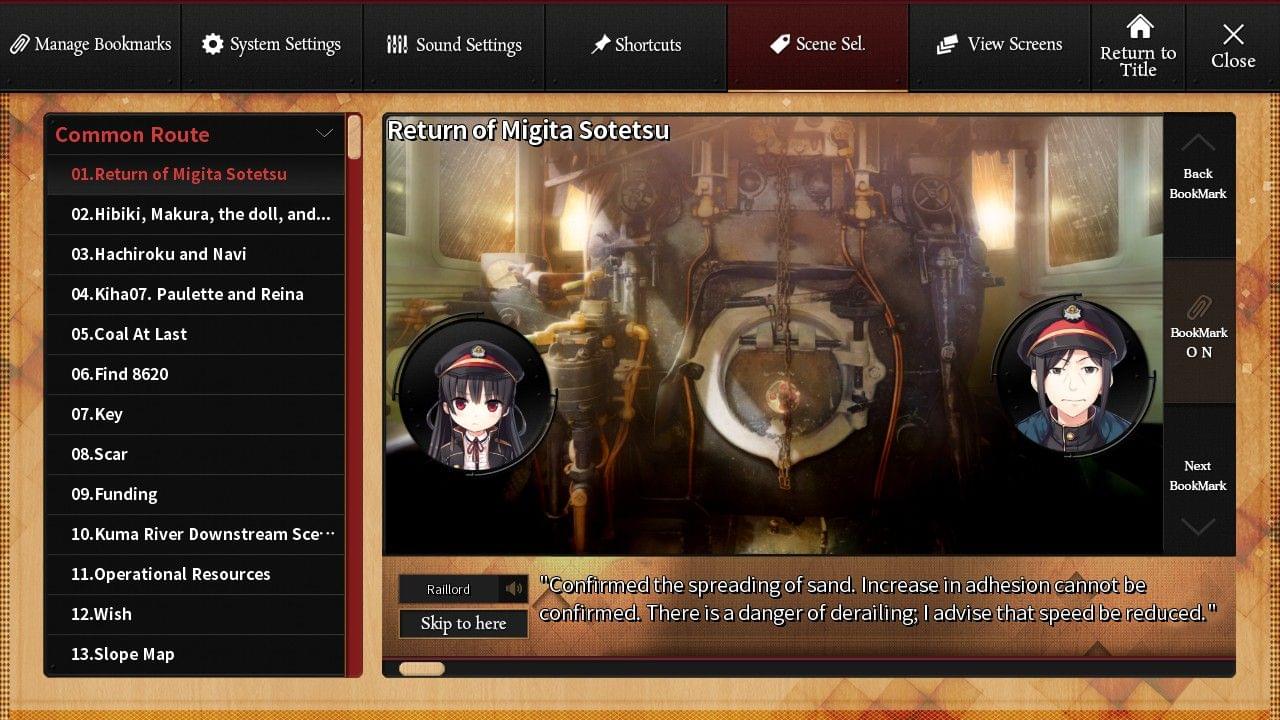
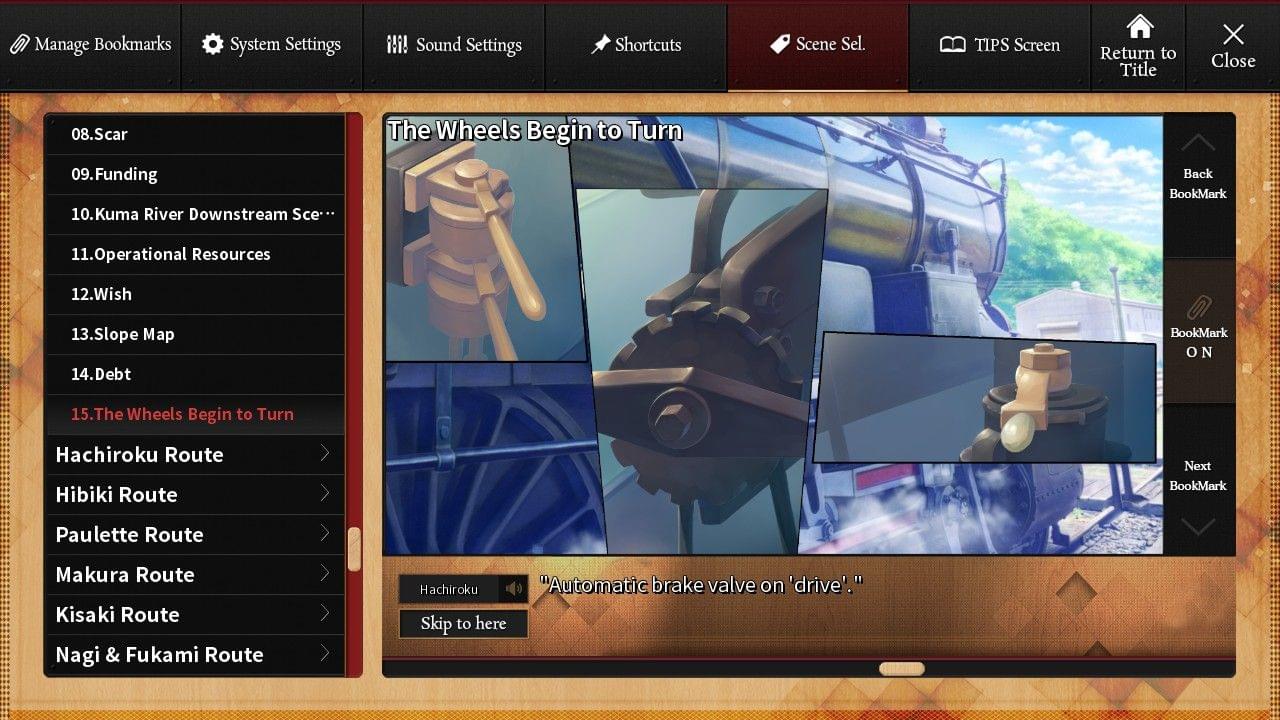
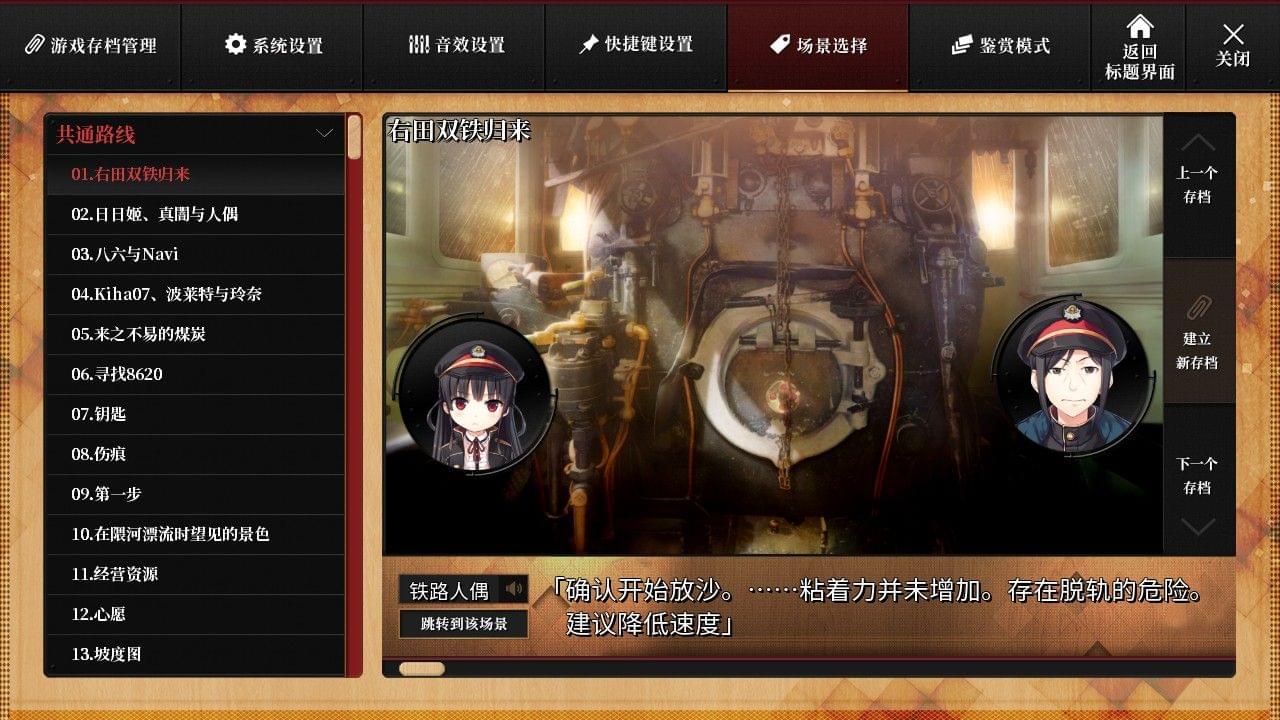
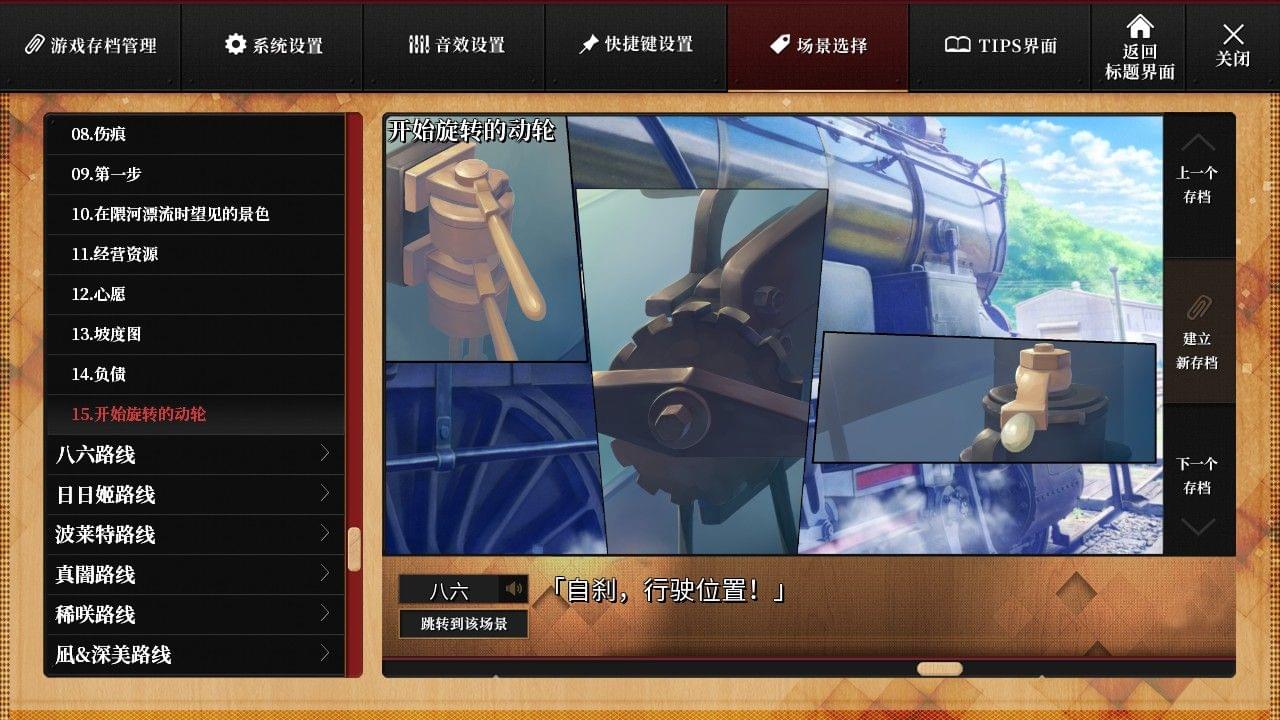
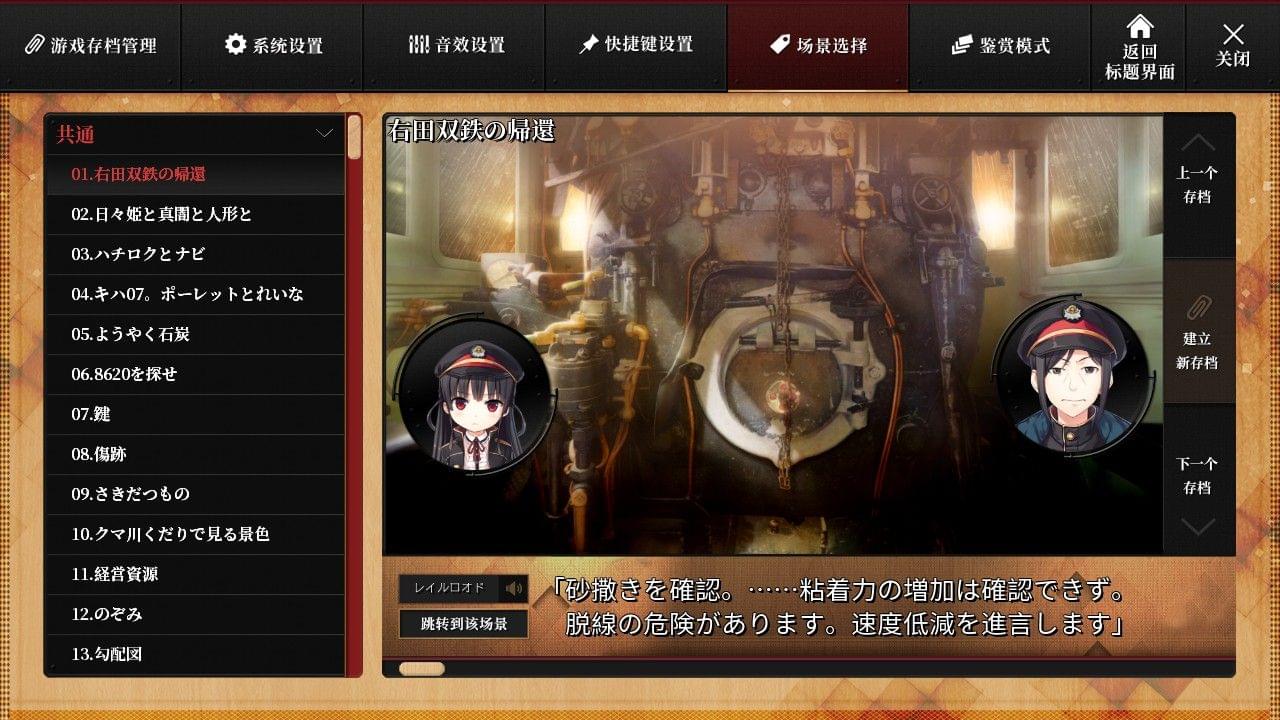
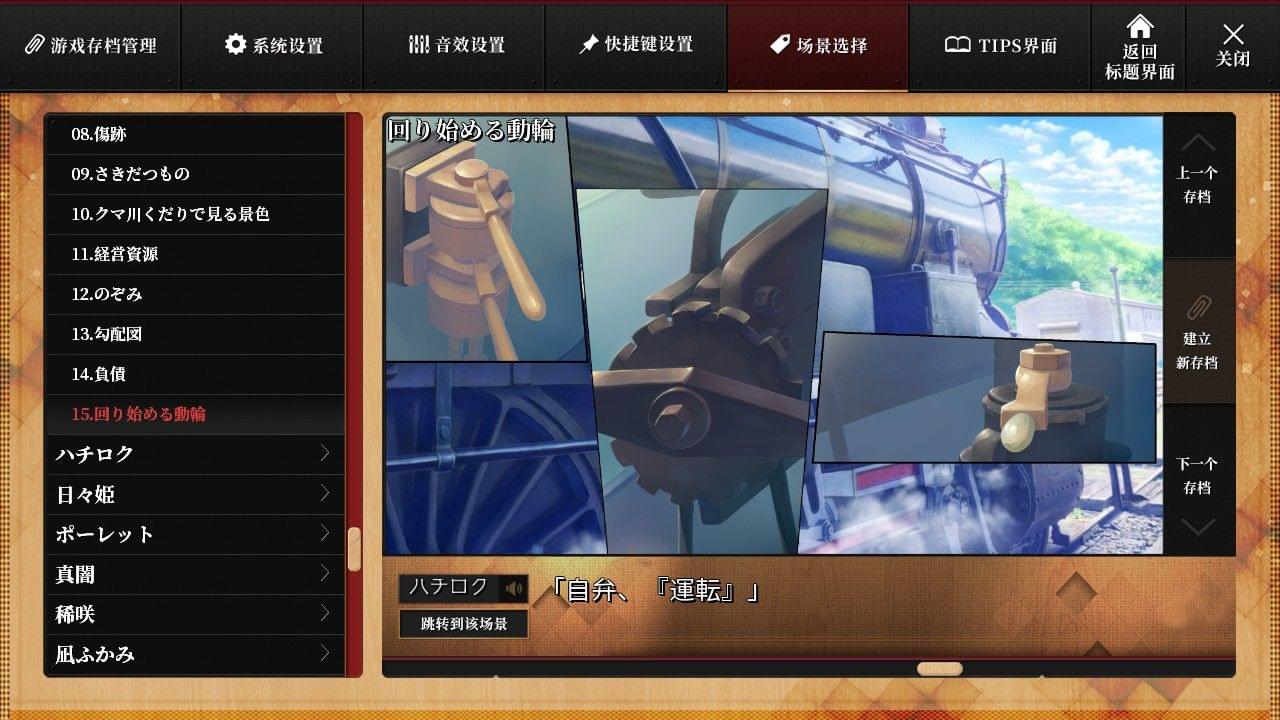
Completely incorrect translations, while are few, do exist. For example, the English text provided the translation “carriage” for the Kanji text “台車” (which is a valid rail terminology in both Chinese and Japanese and means the same thing, although this specific expression, when interpreted as Chinese Hanzi, is widely used in Taiwan, but not the Mainland) and it happens to be incorrect. The correct translation should either be “truck” for North America, or “bogie” for the United Kingdom. The term “carriage” means railroad passenger cars in British terminology, and this originally caused major confusions when I first encountered the text, and I had to temporarily switch to the supplied Japanese text for cross-reference.
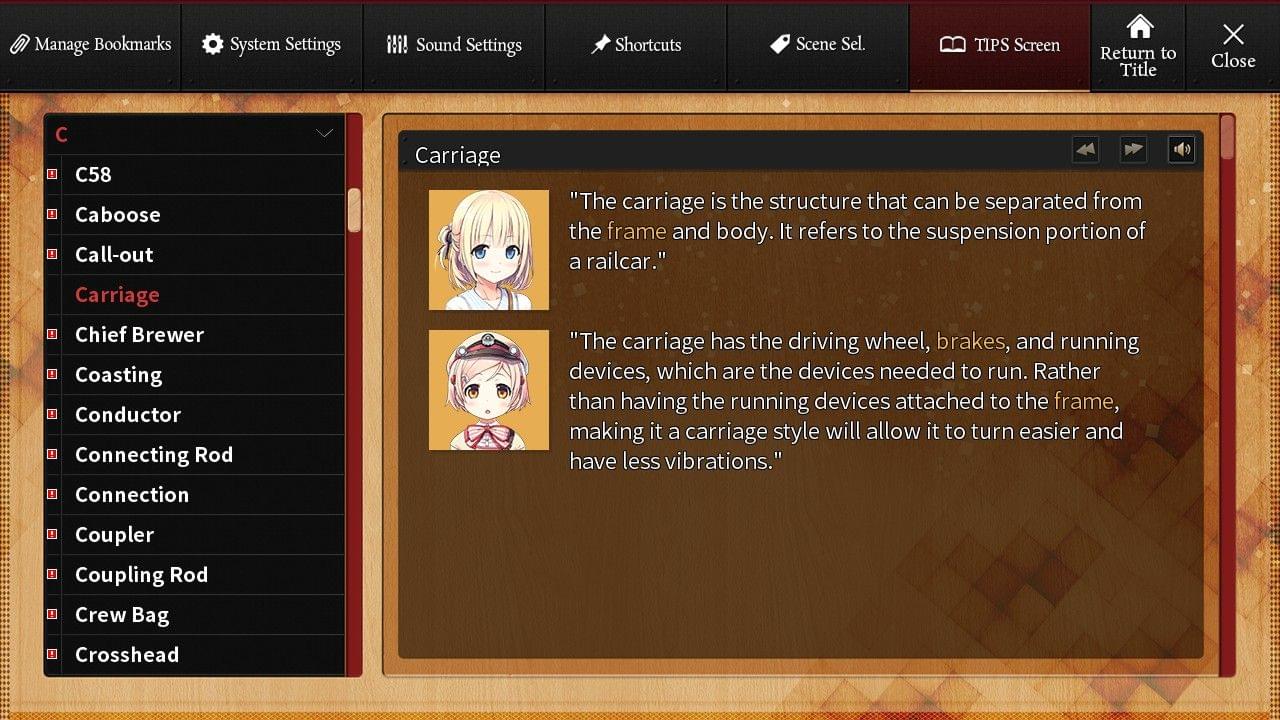
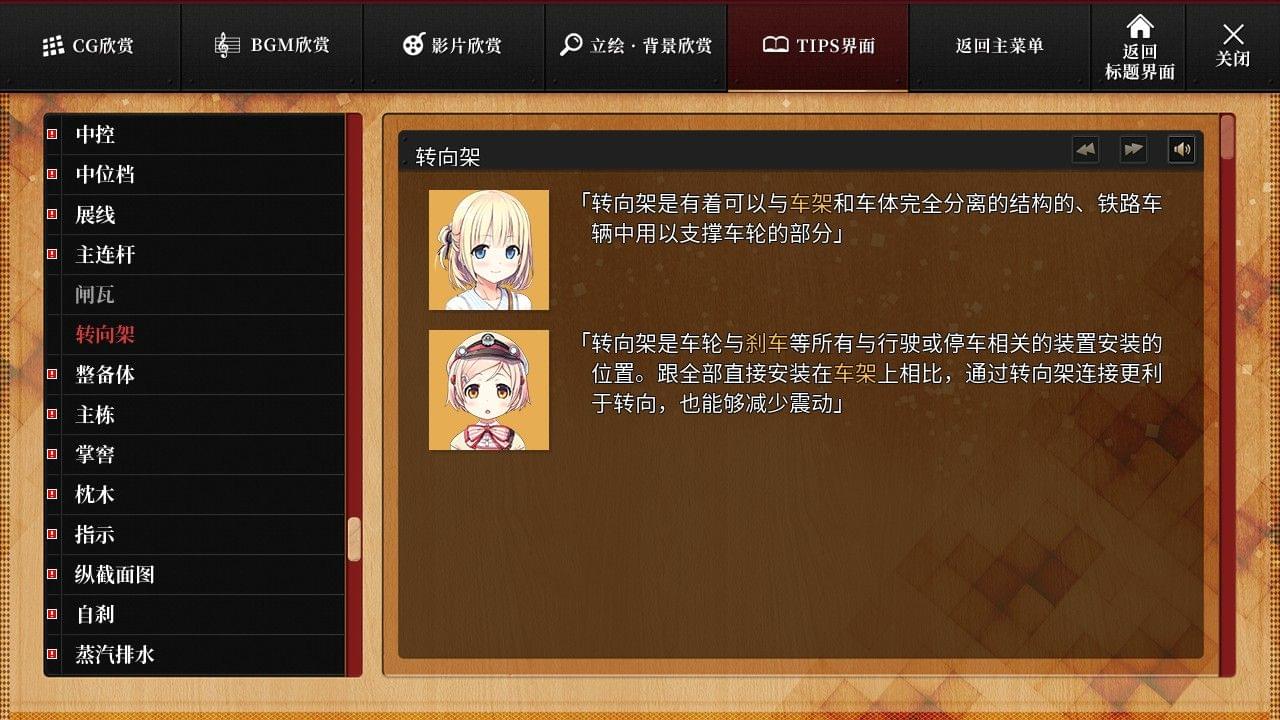
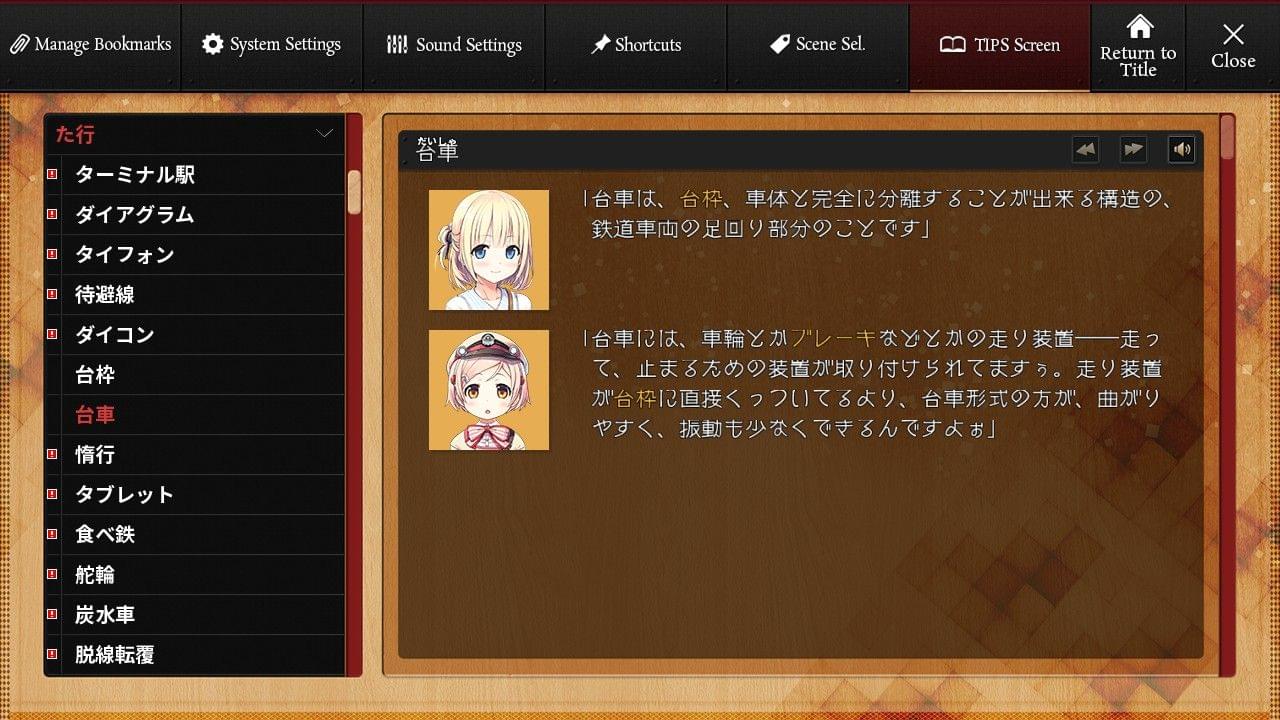
It should be noted the Chinese version had superior translations in terms of rail terminologies because of two reasons. Firstly, Japanese Kanji and Chinese Hanzi are partially inter-operable. Secondly, China absorbed the South Manchuria Railway, which had been operating under modified Japanese codes and standards, after World War II. As a result, we inherited a lot of these standards and terminologies. On the contrary, the English rail terminologies are more complex due to the existence of both the American and the British systems and did not have such bounds to the Japanese originals as mentioned above. Therefore, it is somewhat expected that there would be some shortfalls in the translation of terminologies.
Finally, there are some references in the game that require some understanding of Han characters in general to fully understand. For example, at the beginning of the common route, when Sotetsu was talking with Paulette at the Rail Shop about the burden of operating railroads, Paulette made the reference to the Han character of “iron,” or “铁” in Hanzi and “鉄” in Kanji. In order to fully understand what she is referring to one needs to understand the following two pieces. Firstly, “railroads” are translated into “铁路” and “鉄道” in Chinese and Japanese, respectively, and both literally means “the iron road.” Secondly, just like most Han characters, “铁” is a compound ideogram composed of two parts, which individually happen to mean “gold” or “metal,” and “loss.” For me, it was very easy to understand since I had been learning Chinese formally since primary school, and it was second nature for me to decode Han characters, but I can imagine that for someone who knows nothing about Han characters, it can be very hard, if not impossible, to understand.

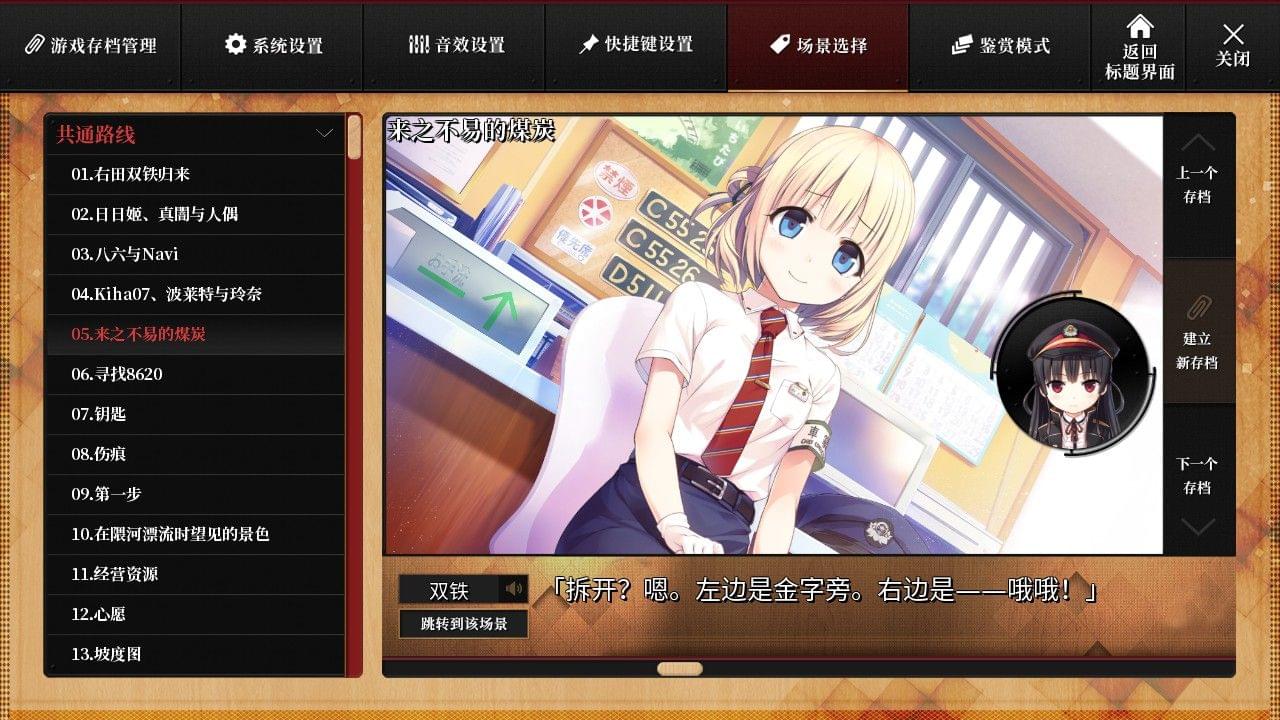

The Verdict
I can recommend Maitetsu in general. It once had the reputation among railfans, at least in China, as being somewhat hardcore and require background knowledge to fully appreciate. However, this is not entirely true. Maitetsu excels in creating a plausible world and engaging me in the process of “make-believe,” and the game is not as intimidating to railroad novices as it may seem. For someone without any background knowledge, Maitetsu is good introduction material to the basics of railroading, albeit mostly limited to outdated technologies from the age of steam. For someone like me, who already know the basics of railroading, Maitetsu is a good source of inspiration, and helps to think about the bigger picture in terms of policy-making and railroad management in general. However, due to the shortfalls in the English translation, I am somewhat reserved about the English version. For the ones who can understand Japanese well enough (unfortunately I cannot), I would suggest sticking to the Japanese text supplied in both the Chinese and English versions, and for those who cannot understand Japanese but can understand Chinese well, I would recommend the Chinese version over the English version.
Works Cited
Dick, P. K. Do Androids Dream of Electric Sheep? Ballantine Books, 1996, https://books.google.com/books?id=3vExWrUnJB0C.
Ryan, M. L. Narrative as Virtual Reality 2: Revisiting Immersion and Interactivity in Literature and Electronic Media. Johns Hopkins University Press, 2015, https://books.google.com/books?id=9vtBrgEACAAJ.